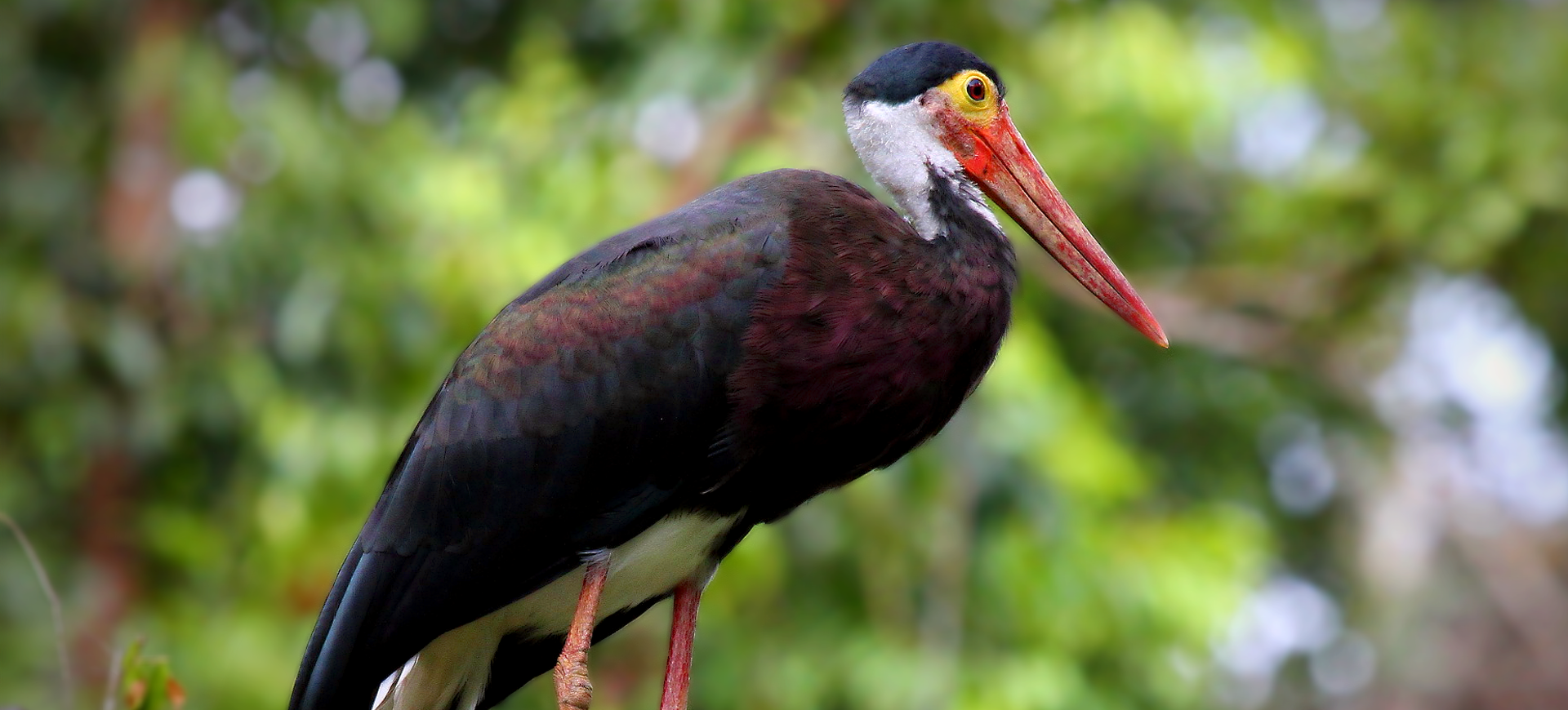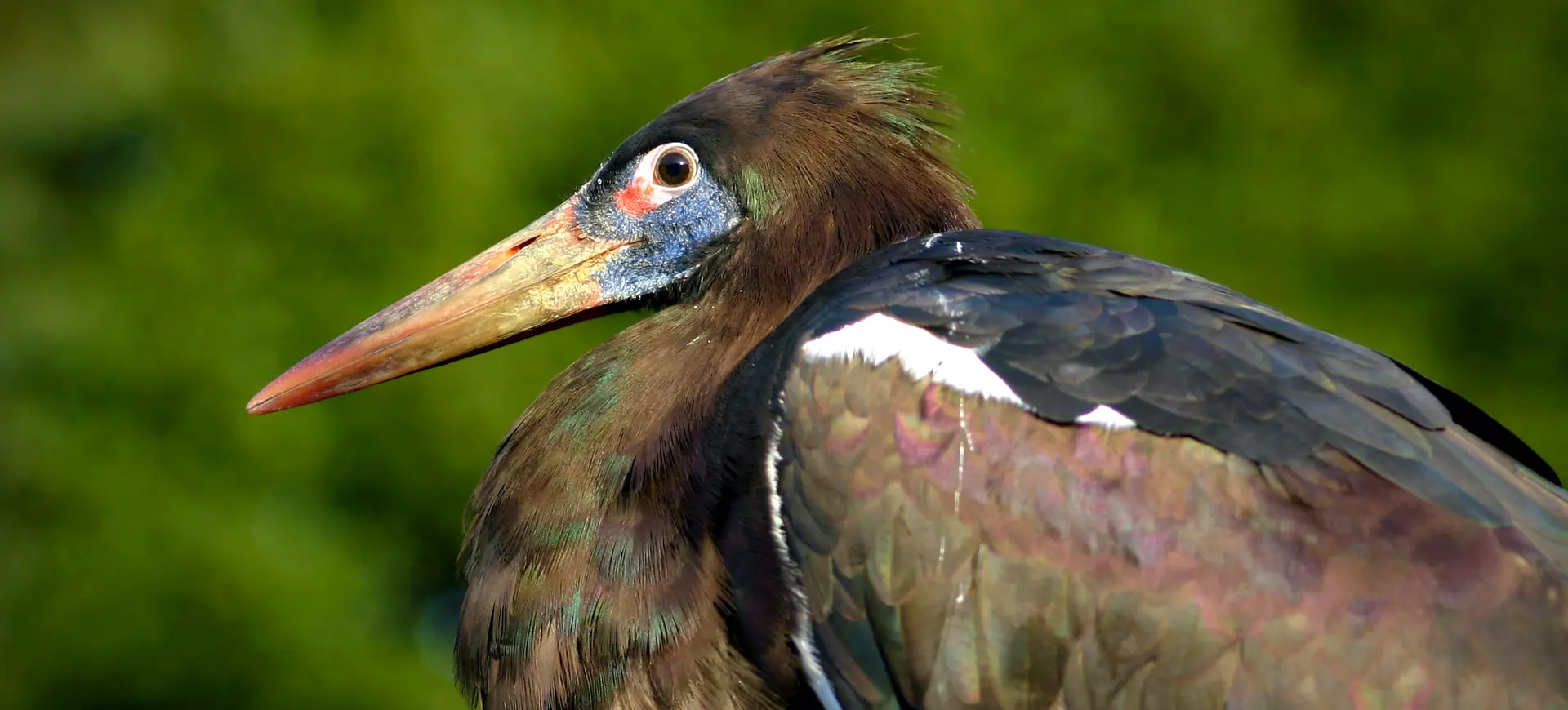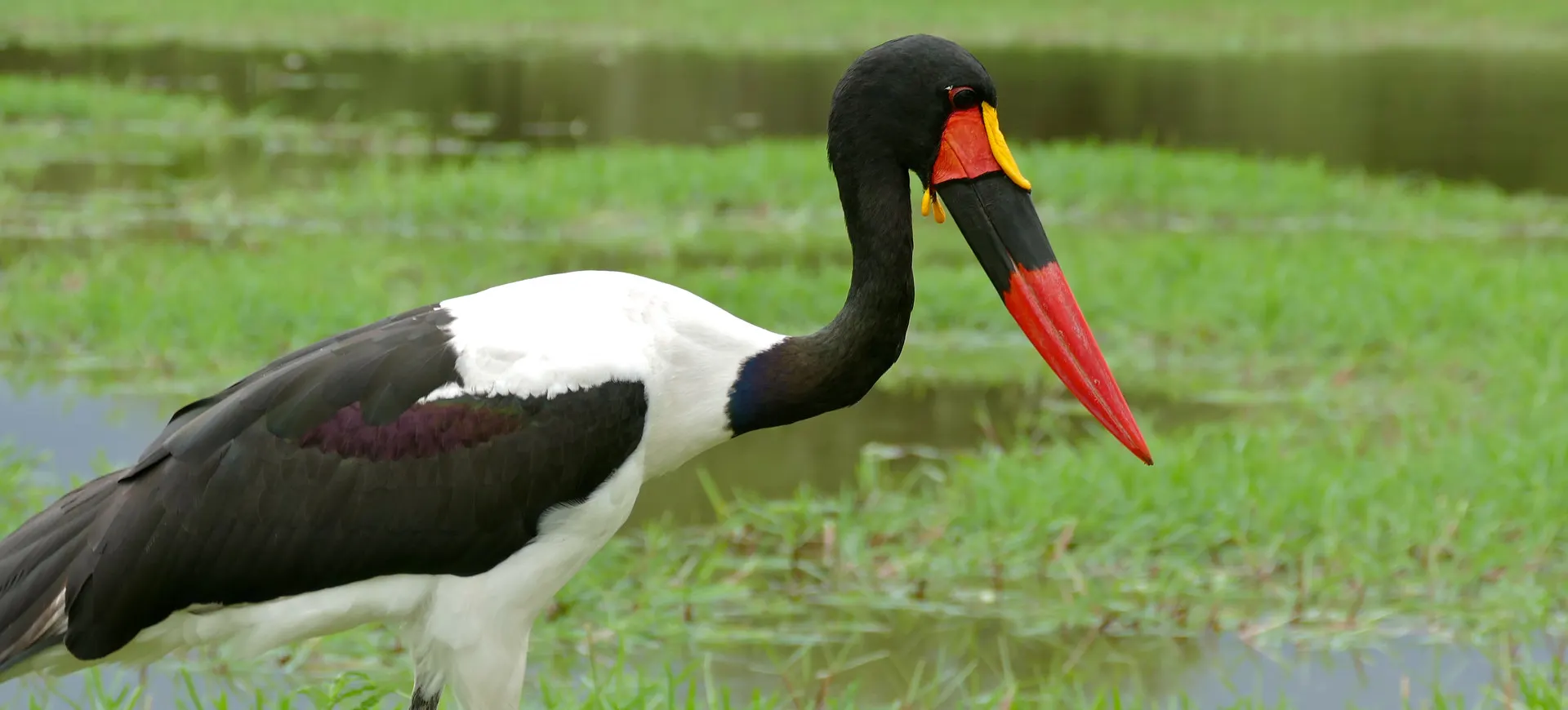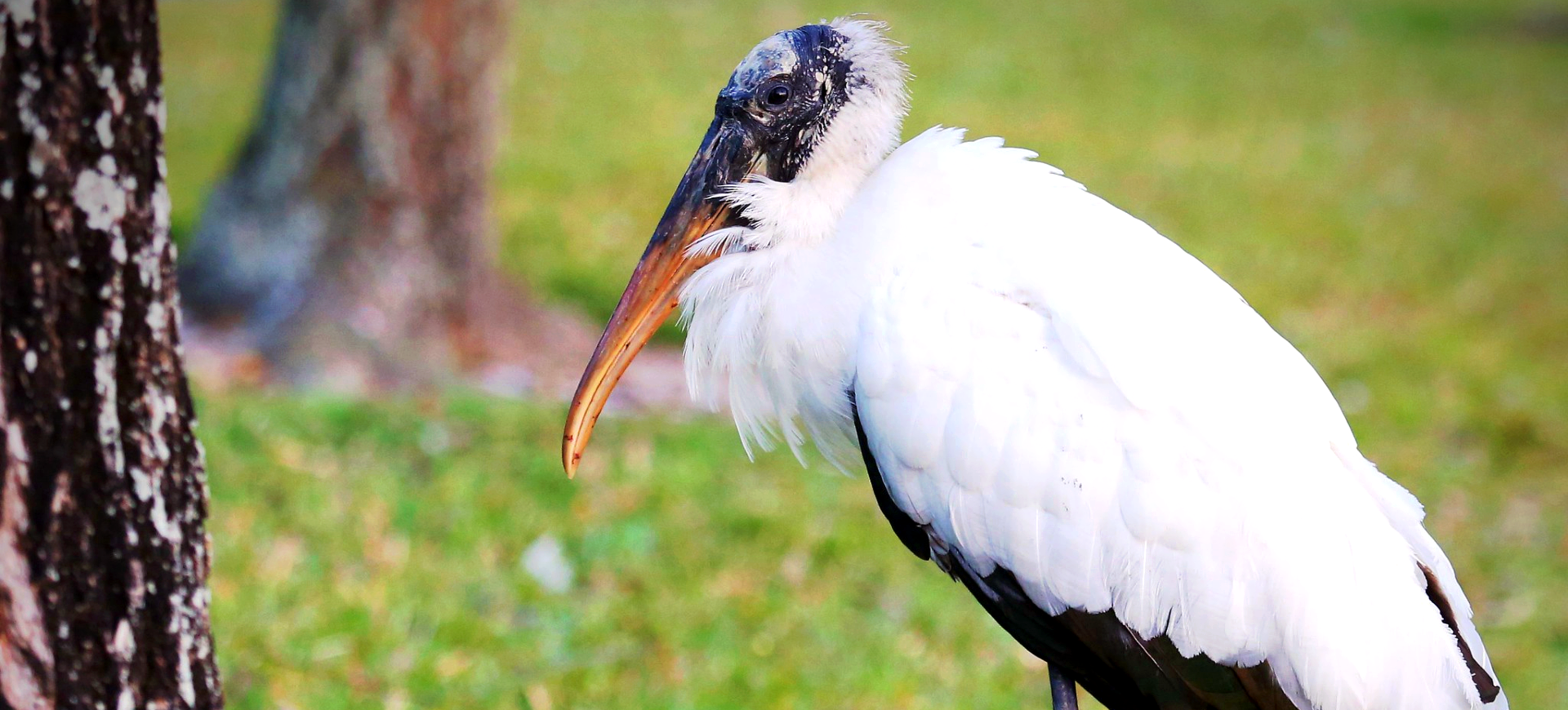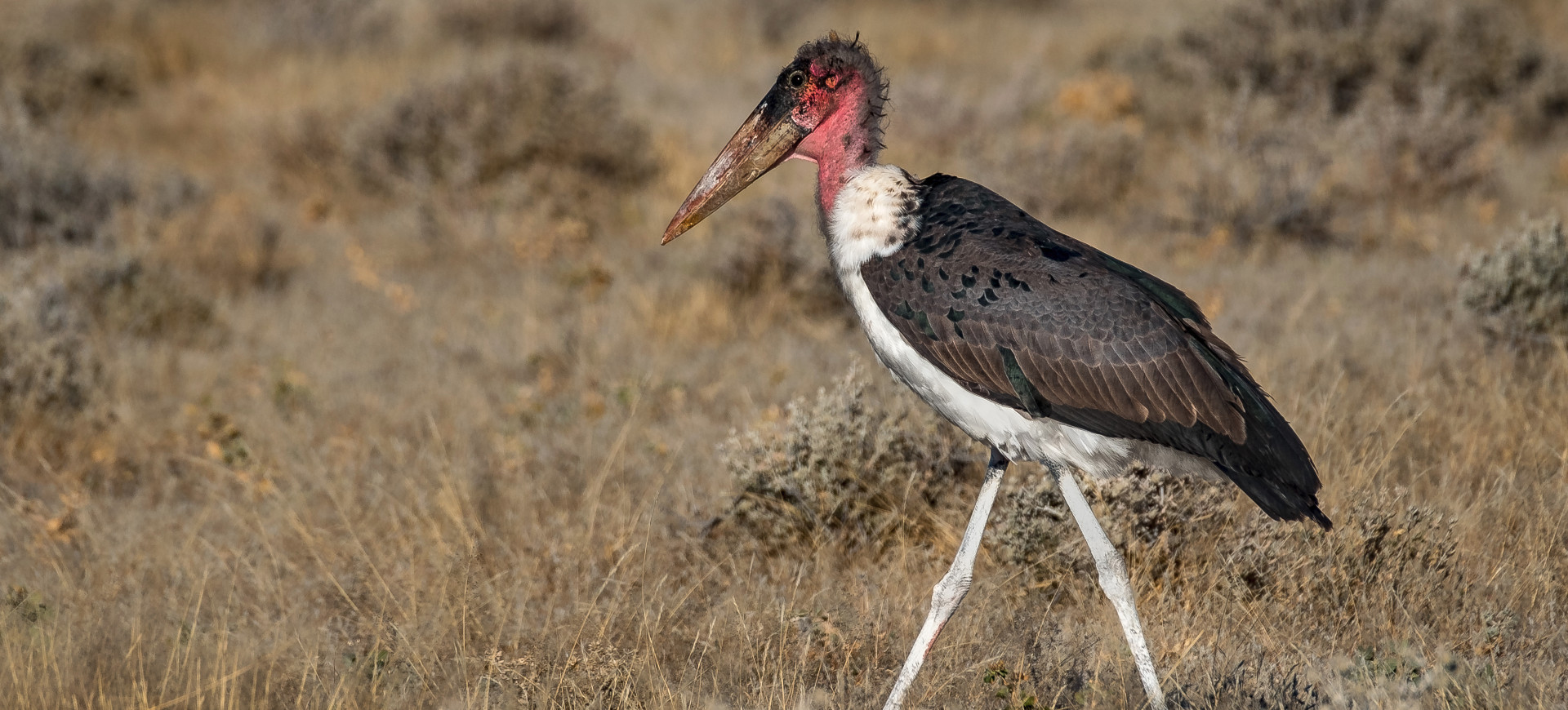Overview
The White Stork (Ciconia ciconia) is a large, distinctive bird known for its striking white plumage with black wing feathers, long red legs, and a long, pointed red beak. These characteristics make it easily recognizable and a symbol of fertility and spring in various cultures. White Storks are migratory birds, breeding in warmer climates across Europe and West Asia and wintering in Africa, from the tropical Sub-Saharan regions to as far south as South Africa. They prefer open wetlands, meadows, and farmlands near water bodies where they can forage for their prey.
White Storks are social creatures, often nesting near humans and within sight of each other. They are known for their large nests, which are reused and added to each year, becoming quite substantial over time. These nests can be found on buildings, trees, and other tall structures. Storks have a silent demeanor due to the absence of vocal cords. Still, they communicate through a loud clattering sound by snapping their beaks together, which is part of their courtship ritual and communication within the species.
The diet of the White Stork primarily consists of a wide variety of aquatic and terrestrial animals, including insects, fish, amphibians, reptiles, small mammals, and small birds. They hunt for food by walking slowly through shallow waters or fields, using their sharp beaks to snatch up prey. The migration of White Storks is a remarkable journey, with some individuals flying thousands of kilometers across continents, relying on thermal updrafts to help them soar and conserve energy.
Taxonomy
Kingdom
Phylum
Class
Order
Family
Genus
Species
Sub Species
Type
Physical Description:
The White Stork is a large bird, standing up to 3.3 feet tall and reaching a wingspan of up to 7 feet, making it one of the most imposing birds in its habitat. The adult stork’s plumage is predominantly white, with contrasting black feathers on the wings that are particularly noticeable in flight. The red beak and legs are distinctive features and play a crucial role in thermoregulation and foraging. Juvenile storks have duller colors, with greyish legs and a beak that gradually turns red as they mature.
Their build is optimized for long flights, with broad wings and a lightweight skeleton. The neck is long and straight, an adaptation for their feeding technique, which involves probing for food in shallow waters. The sexual dimorphism in White Storks is minimal, with males and females appearing very similar, though males can be slightly larger and have longer beaks than females.

Lifespan: Wild: ~20 Years || Captivity: ~35 Years

Weight: Male: 6-9 lbs (2.7-4.1 kg) || Female: 5-8 lbs (2.2-3.6 kg)

Height: Male & Female: 39-45 inches (100-115 cm)

Wingspan: Male & Female: 65-85 inches (155-215 cm)

Top Speed: 25 mph (40 km/h)
Characteristic:
Native Habitat:
The White Stork breeds in open countryside with access to marshy wetlands, rivers, and lakes across Europe, the Middle East, and West Asia. Their preferred nesting sites are typically in areas with low human disturbance, although they readily adapt to nesting on buildings and other structures in rural and suburban settings. The species requires large, open areas for foraging, where they can easily walk and detect prey.
In winter, White Storks migrate to Sub-Saharan Africa, where they stay in savannas, wetlands, and agricultural fields. Their migratory routes are impressive, with western populations crossing the Strait of Gibraltar and eastern populations traveling through the Middle East along the Great Rift Valley.
Climate Zones:
Biomes:
Biogeographical Realms:
Countries:
Diet:
Diet & Feeding Habits:
White Storks are carnivorous, utilizing their sharp beaks to catch various prey, including insects, fish, amphibians, reptiles, small mammals, and birds. They typically feed in shallow waters, grasslands, or agricultural fields, walking slowly to detect and capture prey. Their diet varies seasonally and geographically, depending on the availability of food sources in their habitat.
These storks are known for their beneficial role in controlling pest populations, as they consume many insects and rodents. During the breeding season, they require significant food to nourish their chicks, leading to increased foraging activity. Storks have also adapted to human environments, often seen foraging in garbage dumps and agricultural fields where food can be abundant.
Mating Behavior:
Mating Description:
White Storks are monogamous and often form long-term pair bonds. The breeding season begins as they return to their nesting sites in spring. Males typically arrive first to claim and repair the previous year’s nest. The courtship display includes an elaborate ritual of bill-clattering, where both the male and female stork snap their bills together to produce a loud, rattling sound. This behavior, along with mutual preening and nest-building, strengthens their bond.
Nesting sites are usually high off the ground, on buildings, trees, or specially constructed platforms. Females lay 2 to 5 eggs, which both parents incubate for about 33 to 34 days. The chicks are altricial at birth, requiring several weeks of care and feeding by the parents before they are ready to fledge. Family groups remain together for some time after the young have fledged, with the young learning to forage and fly before migrating south for the winter.
Reproduction Season:
Birth Type:
Pregnancy Duration:
Female Name:
Male Name:
Baby Name:
Social Structure Description:
White Storks are social birds, especially during the breeding season when they nest in colonies. These colonies can range from a few pairs to several hundred, depending on the availability of suitable nesting sites. They can form large flocks outside the breeding season, especially during migration, when thousands of birds may gather at key stopover sites.
Their social behavior extends to feeding, where they can often be seen foraging in groups, especially in areas with abundant food sources like grasslands and wetlands. This social foraging behavior allows them to exploit food resources more efficiently. White Storks establish and defend nesting territories despite their social nature, showing aggression towards intruders to protect their nests and offspring.
Groups:
Conservation Status:
Population Trend:
White Stork populations are generally stable but face threats from habitat destruction, pollution, and collisions with power lines. Their numbers have declined in some areas due to agricultural intensification and wetland drainage. However, conservation efforts, including protecting nesting sites and creating artificial feeding sites, have helped stabilize and even increase populations in some regions.
Conservation programs have been particularly successful in Europe, where most of the breeding population resides. These programs include the installation of platforms to secure nesting sites and modifying power lines to prevent collisions. Public education campaigns have also increased awareness of the species and its needs, contributing to local conservation efforts. These combined efforts have led to notable recoveries in some areas, highlighting the success of targeted conservation strategies.
Population Threats:
The main threats to White Stork populations include habitat loss due to agricultural expansion, urbanization, and wetland drainage. Pollution from pesticides and other chemicals can also affect their food sources, decreasing reproductive success. Collisions with vehicles and electrocutions from power lines are significant mortality factors, especially for migrating birds.
Climate change poses a long-term threat, potentially altering migration patterns and affecting the availability of breeding and feeding habitats. Changes in rainfall patterns can impact their prey’s abundance in breeding and wintering grounds. Despite these challenges, the species’ ability to adapt to human-altered landscapes has allowed it to persist in many areas.
Conservation Efforts:
Conservation efforts for White Storks have focused on habitat protection and restoration, creating safe nesting sites, and reducing mortality from power lines. Many countries in their range have implemented successful breeding programs, including the construction of platforms to encourage nesting and the insulation of power lines to prevent electrocutions. Wetland restoration projects have also been important, improving the quality and availability of feeding habitats.
International cooperation has been key to conservating migratory species like the White Stork. Agreements under the Convention on Migratory Species (CMS) and the African-Eurasian Migratory Waterbird Agreement (AEWA) have helped coordinate conservation efforts across countries. These collaborative efforts have improved the status of some populations, demonstrating the effectiveness of targeted conservation actions.
Additional Resources:
Fun Facts
- White Storks are known for their long migrations, traveling thousands of kilometers between their breeding and wintering grounds.
- The myth of storks delivering babies originates from European folklore, associating the return of storks in spring with birth and renewal.
- White Storks often nest on human-made structures, leading to a close association with human settlements.
- They play an important role in controlling pest populations, benefiting farmers by reducing the number of insects and rodents.
- White Storks can thermoregulate through their legs, changing color depending on the temperature.
- They are one of the few bird species known to use tools, using sticks to stir water to flush out prey.
- The largest White Stork nests can weigh over 2,000 pounds and be used for decades by successive generations.
- Bill-clattering is a courtship ritual and a means of communication within the family.
- Conservation efforts have led to installing special platforms to encourage storks to build nests in safe locations.
- Despite their large size, White Storks are graceful in flight, utilizing thermal updrafts to soar with minimal effort.









